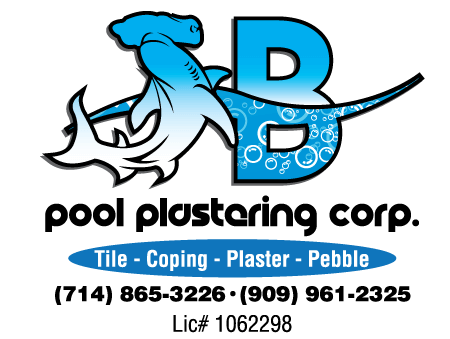
When to Resurface a Pool for Optimal Longevity and Aesthetics
Diving into the crystal-clear water of your swimming pool is one of the most refreshing feelings, especially during hot summer days. But, understanding when to resurface a pool is crucial for maintaining this luxury at its prime. Pool resurfacing is not just about refreshing its aesthetic appeal but also ensuring the longevity and safety of the swimming space.
The process involves several technical and aesthetic considerations that every pool owner must acknowledge. Keep reading to get into the essential aspects of pool resurfacing.
Identifying the Right Time and Process to Resurface a Pool
Knowing when to resurface a pool can be a nuanced decision, intertwining factors like the pool’s age, visible damage, and overall performance. While an aesthetically pleasing collection is a visual delight, understanding and identifying signs of wear and deterioration are essential to maintaining its looks and structural integrity.
Various signs, such as staining, rough texture, and water loss, might be nudging you towards considering a timely resurfacing. This critical maintenance activity revitalizes your pool’s appearance. It safeguards its future, ensuring many years of enjoyment, fun, and serene afternoon dips. Let’s immerse into a comprehensive guide on what entails pool resurfacing, the signs it’s time, and the imperative steps throughout the process.
Mastering the Essentials of How and When to Resurface a Pool

Embarking on the journey to resurface a pool demands a strategic approach, understanding the integral signs indicating necessity, and adopting a systematic, professional method for execution. But when exactly does a pool declare its need for resurfacing, and how should one navigate through this pivotal process?
Unveiling the Telltale Signs Your Pool Demands Resurfacing
Owning a pool is a delightful luxury, yet it comes intertwined with responsibilities like keen observation of any wear and tear. Visual cues such as surface cracks, blisters, peeling, or functional issues like persistent leaks and rough textures indicate the need to resurface a pool.
Decoding the Process Behind Pool Resurfacing
Once the necessity to resurface is identified, diving into the procedural world involves understanding the meticulous steps from draining the pool to chiseling away the old surface, applying the new finish, and patiently allowing it to cure, ensuring an impeccable, durable resurface.
Material Considerations When to Resurface a Pool
The task doesn’t end with deciding to resurface; choosing the right materials like plaster, aggregate finishes, or fiberglass plays a pivotal role in determining the pool’s aesthetic appeal, durability, and future maintenance needs, aligning with your budget and visual preferences.
Diving into the Cost Implications of Pool Resurfacing
While the aesthetic and functional improvements post-resurfacing are undeniable, understanding and planning for the financial investment is crucial. The costs can vary dramatically based on the chosen materials, pool size, and any additional enhancements or repairs needed.
Navigating Through Post-Resurfacing Care: Resurface a Pool
Post-surfacing, a dedicated and meticulous approach towards pool care involving timely chemical balance checks, regular cleaning, and prompt minor repair can vastly enhance the lifespan of the new surface, ensuring sustained aesthetics and functionality.
Tips for Pool Owners: Navigating Through the Intricacies of Resurfacing a Pool

Deciding when to resurface a pool is a crucial aspect of pool maintenance, balancing aesthetic appeal and functional safety. Let’s dive into a pool of tips to help guide you through this vital undertaking, ensuring that your pool remains a source of enjoyment and relaxation for years.
Early Identification of Resurfacing Need
- Regularly inspect your pool for signs like surface cracks, discoloration, and rough spots.
- Pay attention to increased water loss, which might indicate unnoticed leaks.
Choose Materials Wisely
- Research the pros and cons of resurfacing materials like plaster, fiberglass, and aggregate finishes.
- Factor in your budget, desired appearance, and longevity when choosing materials.
Employ Professional Help: Resurface a Pool
- Avoid DIY resurfacing, which could lead to complications and reduced surface longevity.
- Choose a reputable company with positive reviews and notable experience.
Strategic Timing
- Plan the resurfacing during off-peak seasons to enjoy uninterrupted usage during summer.
- Ensure you allocate enough time for the entire resurfacing process, including curing time.
Future-Proofing
- Invest in a quality pool cover to minimize debris and reduce cleaning efforts.
- Consider technologies like UV systems to reduce chemical usage and preserve the new surface.
Budget Management
- Obtain multiple quotes and understand the breakdown of costs involved in resurfacing.
- Allocate a contingency budget for unforeseen repairs and alterations.
Post-Resurfacing Maintenance
- Adhere to a strict schedule of pool cleaning and chemical balancing.
- Seek professional advice for maintaining the specific material you have chosen for resurfacing.
Solidifying Your Pool’s Future with JB Pool Plastering
Embark on a journey to rejuvenate and solidify your pool’s structure and aesthetic appeal with JB Pool Plastering. Our dedicated team of professionals is committed to providing unparalleled pool services. We ensure your pool resurfacing is conducted with utmost precision and quality. Dive into a world where quality meets reliability, and leap to resurface your pool with experts who care.
Contact us today!




